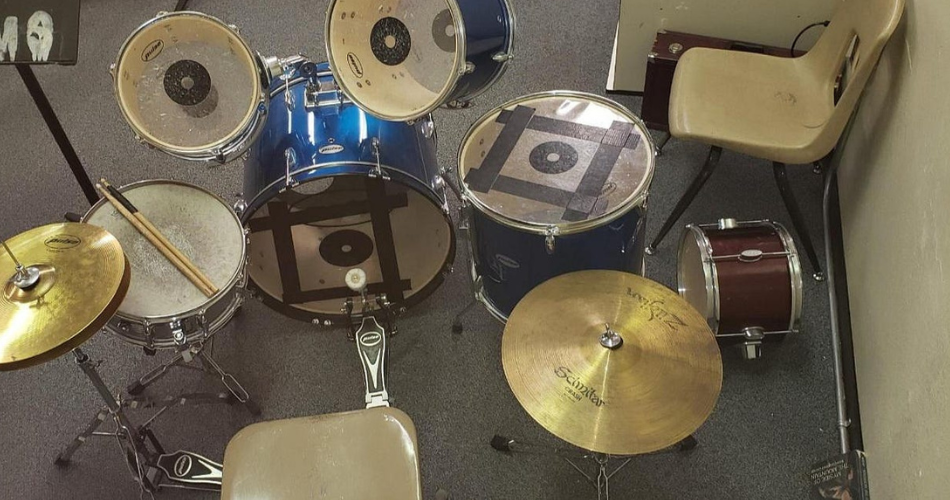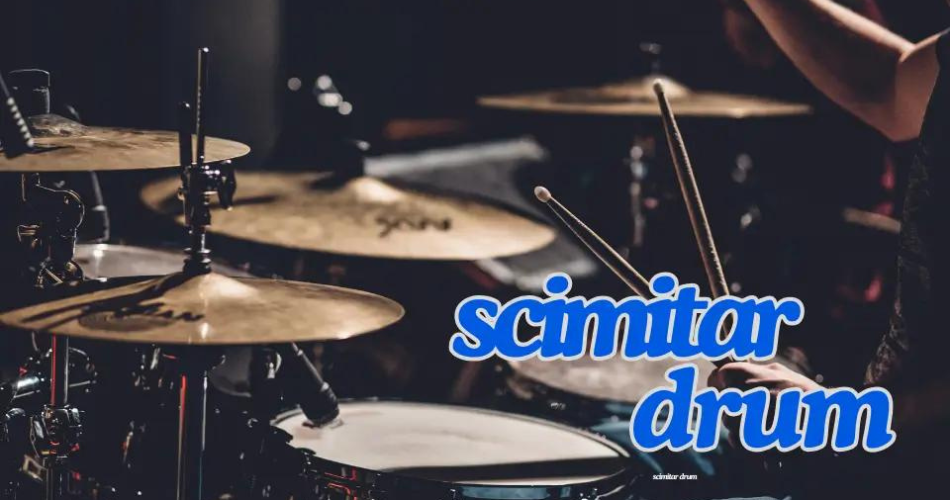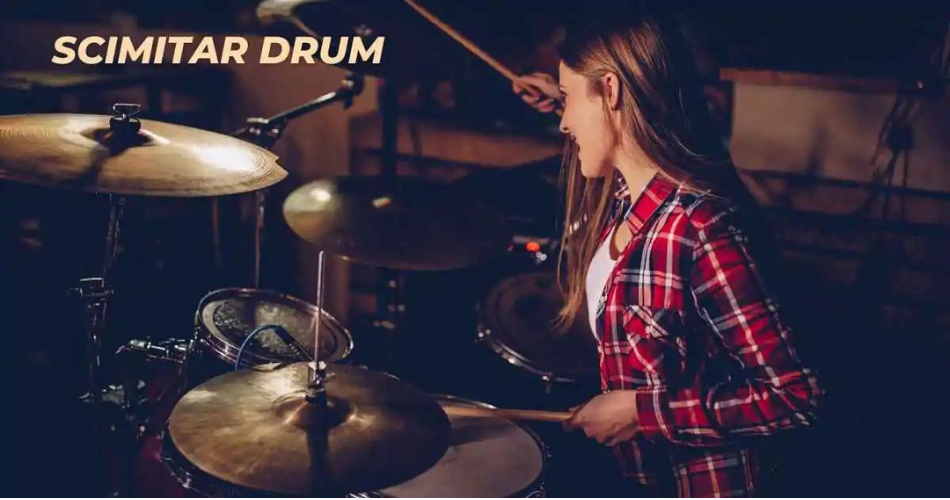Scimitar drums are more than just instruments; they are rich symbols of heritage, deeply rooted in cultural and spiritual traditions. Known for their unique crescent shape, these drums make a striking addition to any musical group. They are typically played using a specially crafted curved stick, reminiscent of the iconic scimitar sword. This not only enhances their visual appeal but also highlights the deep cultural and historical significance of this age-old percussion instrument.
What Is a Scimitar Drum?
The scimitar drum is a distinctive percussion instrument known for its crescent shape and the use of a uniquely curved stick resembling a scimitar for striking its surface. With origins rooted in the Middle East and parts of Asia, this drum has played a significant role in cultural and spiritual practices throughout history. Traditionally, the scimitar drum was integral to rituals honoring deities, celebrating military victories, and invoking positive spirits. Beyond its musical function, the scimitar drum symbolizes bravery, nobility, and the warrior spirit associated with the scimitar sword, historically wielded by soldiers in battle.
As its use expanded from Asia to Europe, the scimitar drum was adopted by various cultural and religious traditions, valued not only for its striking visual appeal but also for the unique, resonant sound it produces. This instrument has endured as a powerful emblem of cultural heritage and spiritual expression, embodying themes of strength and ceremonial significance across different societies.
The Cultural Significance of the Scimitar Drum
The scimitar drum carries a profound cultural significance, representing power, bravery, and a deep spiritual bond. Historically, these drums served far beyond mere musical instruments; they were vital in rituals that connected communities with their spiritual beliefs, deities, and ancestors. The resonant sound of the scimitar drum was believed to have mystical qualities, summoning benevolent spirits, warding off malevolent forces, and uniting people during celebrations and conflicts alike.
In ancient Middle Eastern cultures, scimitar drums played a prominent role in key ceremonies and processions. Their thunderous beats were thought to embolden warriors before battle, providing a sense of courage and fortitude. This connection with warfare and valor has led to the drum’s association with masculine virtues and regal authority.
Components and Construction of Scimitar Drums
Crafting a scimitar drum involves a meticulous selection of natural materials known for their acoustic excellence and durability. The drumhead, traditionally made from animal hide like calfskin, is tightly stretched over a wooden frame to produce the drum’s characteristic deep and resonant sound.
The drum’s body is usually constructed from wood, prized for its balance of strength and lightness. Some scimitar drums also feature metal elements, such as rings or strings, which not only reinforce the drum but also add decorative flair. Often, these drums are adorned with intricate carvings or artwork that reflect the cultural and artistic values of the communities that create them.
The drum is played with a unique scimitar-shaped stick, which resembles a curved sword. This design not only enhances the visual appeal but also influences the drum’s sound, as the way the stick strikes the drumhead—either with its edge or flat side—produces a variety of distinct tones, adding to the drum’s complex acoustic profile.
Modern Innovations in Scimitar Drums
While the traditional scimitar drum is rooted in ancient practices, contemporary innovations have led to the development of new versions that merge classic and modern techniques. Modern scimitar drums may use synthetic materials, such as artificial drumheads or lightweight alloys, which improve the instrument’s durability, enhance sound quality, and make the drums lighter and easier to handle. These advancements have broadened the drum’s appeal, making it accessible to musicians across diverse musical genres, including contemporary styles.
Despite these modern adaptations, the core significance of the scimitar drum remains deeply tied to its traditional roots as a cultural and spiritual emblem. Even today, modern versions preserve the iconic crescent shape and distinctive playing stick, maintaining the drum’s historical aesthetic and acoustic integrity, which continue to symbolize cultural identity across generations.
The Unique Acoustic Qualities of Scimitar Drums
Scimitar drums are renowned for their distinctive acoustic resonance, characterized by deep, resonant tones that can be tailored through various playing techniques or by adjusting the tension of the drumhead. Drummers can manipulate these drums to produce an array of sounds, ranging from sharp, precise beats to lush, immersive rhythms that envelop the listener. This versatility makes the scimitar drum a dynamic instrument capable of adding depth and texture to any musical composition.
Beyond their sonic attributes, scimitar drums hold significant meaning in musical expression. Whether played solo or as part of an ensemble, these drums contribute a unique percussive layer that can evoke a broad spectrum of emotions—from the solemnity of spiritual rituals to the exuberance of festive celebrations. In contemporary music, scimitar drums are sometimes employed to infuse tracks with an exotic or historical element, showcasing the instrument’s adaptability and enduring appeal.
Scimitar Drums in Contemporary Music
While scimitar drums are deeply rooted in traditional music, they have successfully transitioned into modern genres. Musicians and composers are increasingly drawn to the drum’s unique sound and cultural resonance. In genres like world music, jazz, and even certain electronic styles, scimitar drums offer a distinctive rhythmic quality that sets them apart from more conventional percussion instruments.
In modern contexts, the use of scimitar drums often symbolizes a blend of the past and present. Artists incorporate these drums not only to honor ancient traditions but also to explore new sonic landscapes. This fusion of old and new ensures that the scimitar drum remains a vibrant and relevant part of today’s musical landscape, appealing to both musicians and audiences seeking fresh and meaningful auditory experiences.
Cultural and Spiritual Significance of Scimitar Drums
Beyond their musical applications, scimitar drums play a vital role in various cultural and spiritual practices. In many communities, these drums are more than just instruments; they are symbols deeply embedded in rituals that mark significant life events such as births, weddings, and funerals. The resonant sound of the scimitar drum is often believed to bridge the physical and spiritual realms, facilitating communication between humans and the divine.
Scimitar drums also enhance storytelling, where their rhythms accentuate the narrative, adding emotional depth and resonance to the tale. This use extends the significance of the scimitar drum beyond music, as it becomes an essential tool for preserving and transmitting cultural heritage. By intertwining music, spirituality, and tradition, scimitar drums continue to be cherished artifacts that reflect the rich cultural tapestry of the communities that use them.
Exploring Variations of Scimitar Drums: Scimitar Drum Cymbals and Scimitar Drum Wig
The scimitar drum family encompasses various types, each offering distinct sounds and applications. A notable variation is the scimitar drum cymbal, which consists of two flat, metallic plates that produce a sharp, resonant tone when struck together. This variation is commonly used in ensembles to add a bright, cutting accent that stands out amid other instruments.
Another notable variant is the scimitar drum wig, renowned for its deep, bass-heavy tones and pronounced percussive qualities. This type of drum is often featured in cultural ceremonies and events, where its resonant sound enhances the atmosphere and underscores the event’s significance. Despite these differences, the underlying meaning of the scimitar drum remains consistent across its variations, symbolizing themes of unity, cultural heritage, and a deep spiritual connection.
The Scimitar Drum as a Symbol of Community and Cultural Identity
In many traditions, this drum transcends its status as an instrument, becoming a communal artifact that brings people together. Whether played in large gatherings or intimate circles, the act of drumming fosters a sense of shared purpose and unity.
Historically, scimitar drums were used in military contexts to rally soldiers and inspire bravery, with the drum’s sound resonating across battlefields as a reminder of collective strength and determination. Today, the scimitar drum continues to embody these values, symbolizing the resilience and enduring spirit of the communities that hold it dear.
The Future of Scimitar Drums
As global interest in traditional instruments continues to grow, the scimitar drum is poised for a revival. Musicians and instrument makers are increasingly exploring innovative ways to incorporate scimitar drums into modern musical genres while respecting the instrument’s rich cultural roots. This fusion of tradition and innovation ensures that the scimitar drum will continue to captivate new audiences.
The future of scimitar drums lies in their capacity to evolve and adapt. By blending modern materials and techniques with the core characteristics that define these instruments, scimitar drums can remain relevant in today’s dynamic musical landscape. As more individuals experience the unique beauty and power of this ancient instrument, the significance of the scimitar drum will continue to inspire and connect people across generations.
Conclusion
The scimitar drum is far more than a musical instrument; it stands as a symbol deeply intertwined with the cultural heritage, values, and spiritual traditions of the communities that have valued it for generations. Characterized by its unique crescent shape and profound, resonant tones, the scimitar drum carries a rich legacy that is steeped in historical and cultural significance.
From ancient ceremonial uses to contemporary performances, the scimitar drum continues to captivate audiences with its unique ability to merge historical traditions with modern expressions. Its lasting allure lies in its power to link the past and present, forging connections across cultures and time periods. Looking ahead, the scimitar drum remains a potent emblem of human creativity and the enduring pursuit of connection, identity, and self-expression.
Keep up-to-date with breaking news and updates on Englandbuzz



